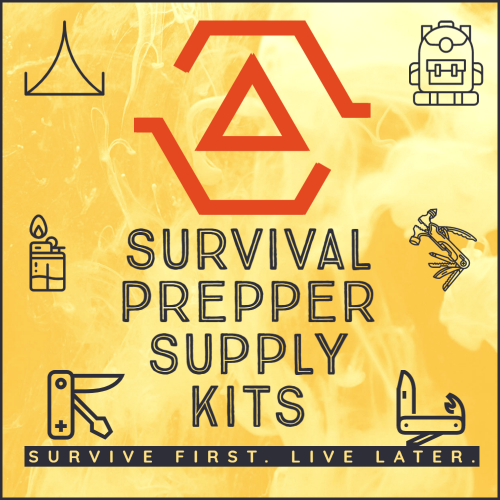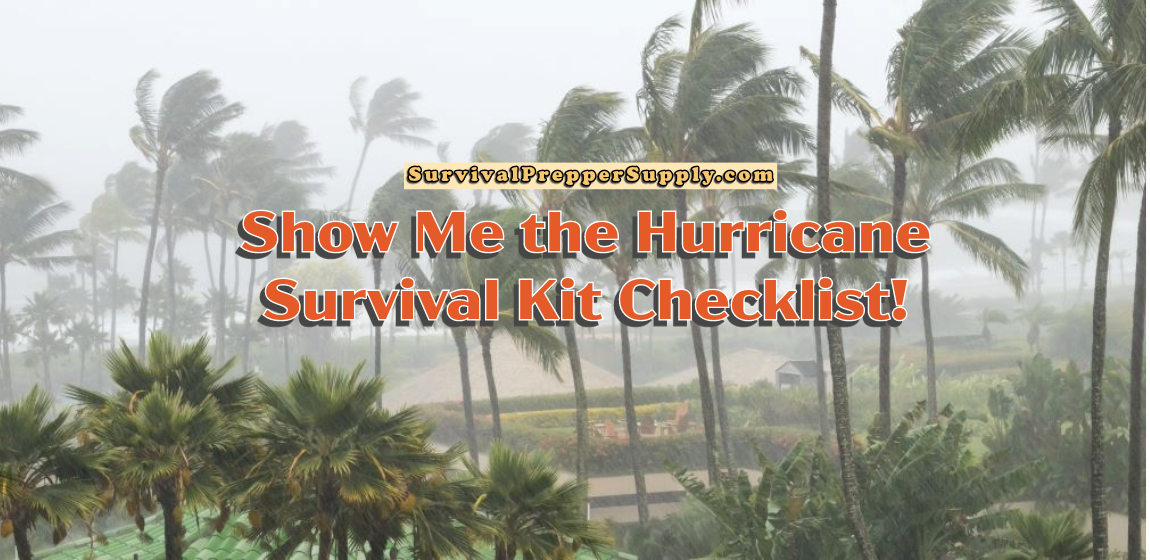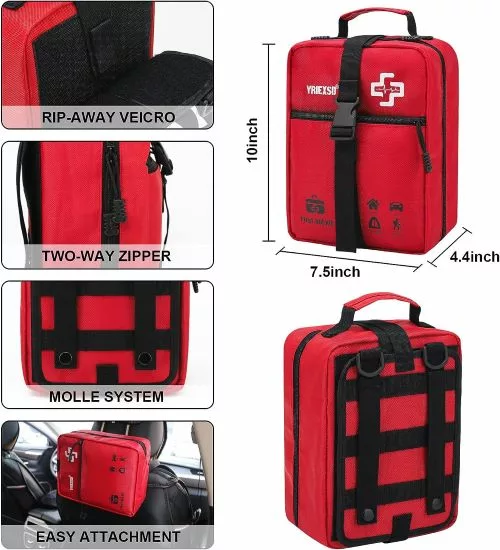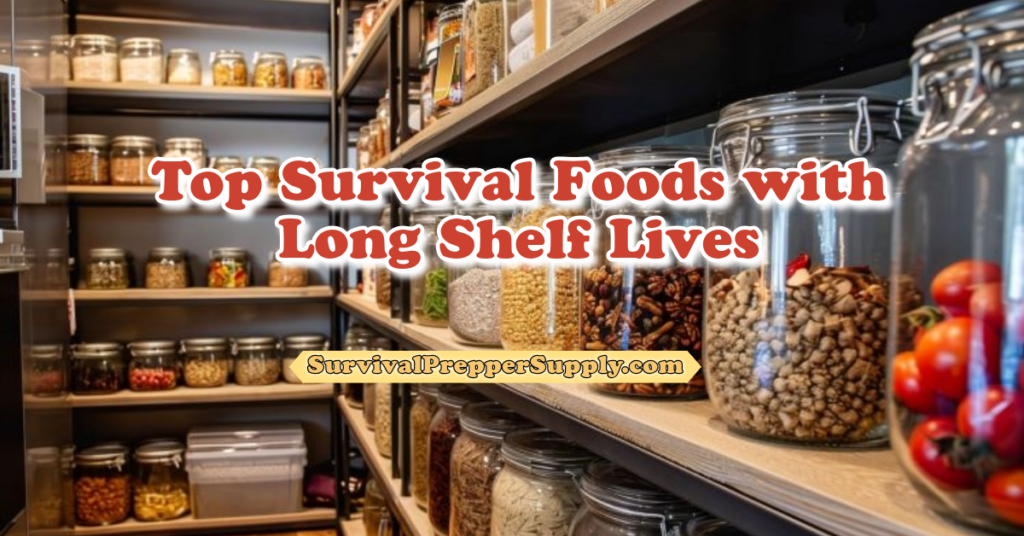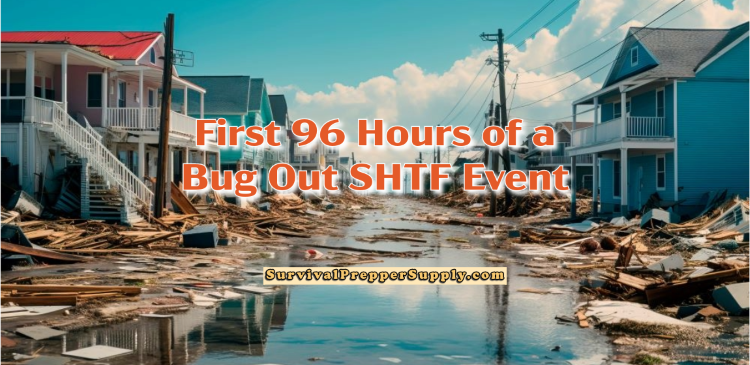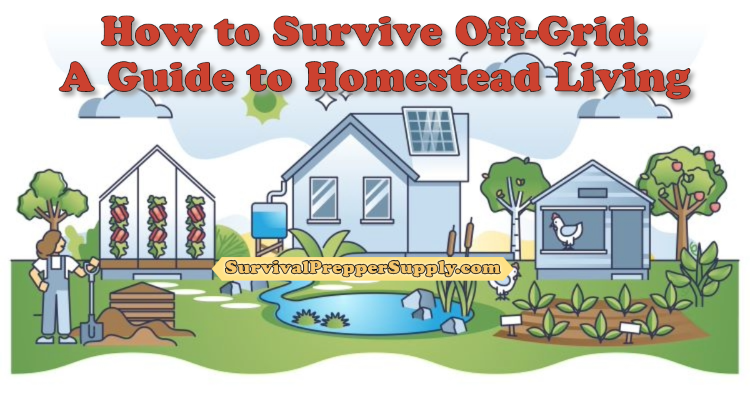Survival Preppers – Be Prepared for the Worst
Natural disasters can strike without warning, and hurricanes are one of nature’s most destructive forces. When a hurricane is approaching, having a well-prepared survival kit can make all the difference between staying safe and facing unnecessary risks. In this article, we will provide you with a comprehensive hurricane survival kit checklist to ensure you and your loved ones are well-equipped to face the challenges of these powerful storms.
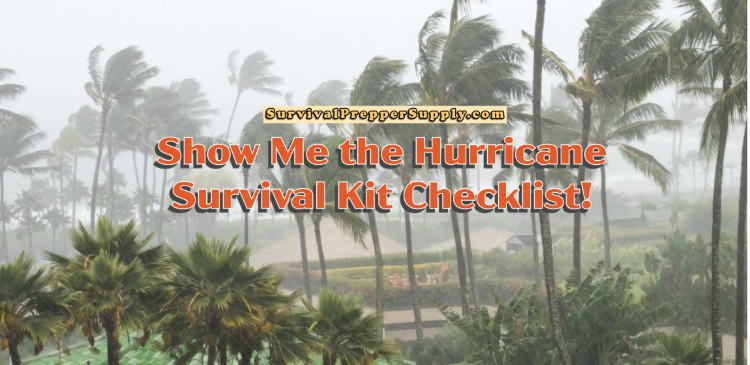
Table of Contents
- Understanding Hurricanes: What You Need to Know
- Building Your Hurricane Survival Kit
- 2.1 Essential Documents and Communication
- 2.2 Non-Perishable Food and Water
- 2.3 First Aid and Medications
- 2.4 Clothing and Bedding
- 2.5 Tools and Safety Supplies
- Emergency Planning for Your Pets
- Securing Your Home: Preparing for Impact
- During the Hurricane: Staying Safe
- After the Storm: Assessing the Damage
- Recovery and Rebuilding: Steps to Take
- Community Resources and Support
- Insurance and Financial Preparedness
- Lessons Learned: How to Improve Your Kit
- Hurricane Survival Stories: Real-Life Experiences
- Staying Informed: The Role of Technology
- The Importance of Evacuation Plans
- Caring for Vulnerable Populations
- Conclusion: Your Safety is a Priority
Understanding Hurricanes: What You Need to Know
Hurricanes are powerful tropical storms characterized by strong winds and heavy rainfall. These storms can cause widespread destruction, including flooding, power outages, and infrastructure damage. Understanding the basics of hurricanes, such as categories and storm surges, is crucial to preparing for them effectively.
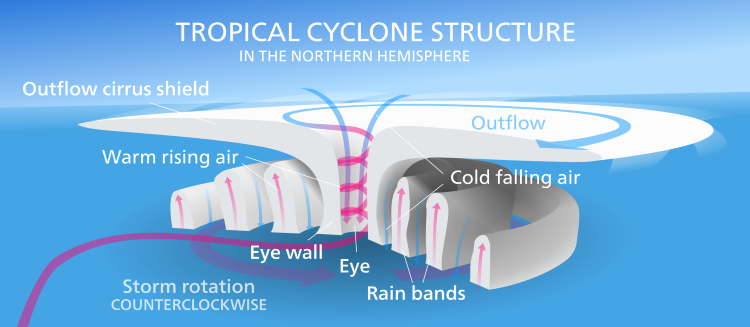
Building Your Hurricane Survival Kit
Related: Grab-and-Run Emergency Kits for Swift Evacuation and Preparedness
Please note that this post contains affiliate links, meaning I will get a small commission for qualifying purchases at no extra cost to the buyer.
2.1 Essential Documents and Communication
In the event of a hurricane or tropical cyclone, you need to have important documents ready, such as identification, insurance policies, and medical records. Store them in a waterproof container. Additionally, ensure you have a fully charged cellphone and a backup charger to stay connected.
Related: 7 Steps to Building a DIY Survival Prepper Supply Kit
2.2 Non-Perishable Food and Water
Stock up on non-perishable food items like canned goods, energy bars, and dried fruits. Aim for a three-day supply. Also, store one gallon of water per person per day to cover drinking and sanitation needs.
Related: The Ultimate SHTF Survival Lessons Guide, Lesson #1-2, Food and Water
2.3 First Aid and Medications
A well-stocked first aid kit is essential. Include adhesive bandages, antiseptics, prescription medications, and basic medical supplies. Don’t forget any necessary prescription medications.
400 Piece Large First Aid Kit Premium Emergency Kits
ESSENTIALS FOR EMERGENCY – This kit contains 400 first-aid supplies for emergencies. Use the essentials from the emergency bag to care for minor scrapes, burns, wounds, etc. The kit includes adhesive bandages, a tourniquet, bandages, an emergency blanket, a burn gel pack, a first aid guide, etc.
PORTABLE DESIGN – This VRIEXSD first aid kit is designed to carry it to prepare for emergencies easily. The compact size of 9.43x6.8 inches and weighs only 2.64 pounds. It can be hung on your backpack or stored in your cars, trucks, jeep, or other places in an emergency.
This is an Amazon’s Choice item. Great price!
Related: Bushcraft – Part 4 First Aid for Survival
2.4 Clothing and Bedding
Pack comfortable clothing, sturdy shoes, and extra socks. Blankets and sleeping bags will keep you warm during power outages or evacuations.
Three tropical cyclones of the 2006 Pacific typhoon season at different stages of development. The weakest (left) demonstrates only the most basic circular shape. A stronger storm (top right) demonstrates spiral banding and increased centralization, while the strongest (lower right) has developed an eye.
Three different typhoons were spinning over the western Pacific Ocean on August 7, 2006, when the Moderate Resolution Imaging Spectroradiometer (MODIS) on NASA’s Aqua satellite acquired this image. The strongest of the three, Typhoon Saomai, formed in the western Pacific on August 4, 2006, as a tropical depression. Within a day, it had become organized enough to be classified as a tropical storm. While Saomai was strengthening into a storm, another tropical depression formed a few hundred kilometers to the north, and by August 6, it became tropical storm Maria. Typhoon Bopha formed just as Maria reached storm status and became a storm itself on August 7. As of August 7, the University of Hawaii’s Tropical Storm Information Center predicted that Bopha and Saomai would continue on tracks that would take each into China, while Maria would move northwest across the southern end of Japan. Saomai was predicted to gather strength, while Maria and Bopha were projected to remain near their current strengths. This image was acquired at 12:35 p.m. local time (04:35 UTC) on August 7. It is unusual, but certainly not unprecedented, to have three storm systems all in the same general area at one time. The trio makes an interesting illustration of the evolution of tropical storm systems. Bopha, the youngest at just a few hours old, shows only the most basic round shape of a tropical storm. Maria, a day older, shows a more distinct spiral structure with arms and an apparent central eye. Despite their differences in appearance, both storms were around the same size and strength, with peak sustained winds of around 90 and 100 kilometers per hour (58 and 63 miles per hour), respectively. A day older than Maria is the much more powerful Typhoon Saomai. At the time of this image, the typhoon had sustained winds of around 140 km/hr (85 mph), and forecasters predicted that it would continue to gather strength before coming ashore in China, according to the University of Hawaii’s Tropical Storm Information Center. The typhoon’s well-developed structure (including a distinct, closed eye in the center) in comparison to Maria is clear in this image. The slanting diagonal feature through the image is sunlight bouncing off the ocean into the MODIS instrument, a phenomenon called sunglint. The very bright patch is where the reflection is strongest.

2.5 Tools and Safety Supplies
Include multipurpose tools, flashlights, batteries, a whistle, and a manual can opener in your kit. These tools can prove invaluable during emergencies.
Related: Survival Prepper Tips for Knowing When It’s Time to Bug Out
Emergency Planning for Your Pets
Remember your furry friends. Prepare a kit for them with food, water, medications, and comfort items. Identify pet-friendly shelters in advance.
Related: Crisis Checklist: Saving Your Pet’s Life When Disaster Strikes
Related: 8 Tips to Safely Evacuate Your Horse in a Disaster
Securing Your Home: Preparing for Impact
Trim trees, reinforce windows, and secure outdoor objects before the storm hits. Create a safe space within your home to take shelter during the hurricane.
During the Hurricane: Staying Safe
Stay indoors. Avoid windows and doors. If flooding is a risk, move to a higher floor. Listen to weather updates via battery-powered radios or smartphone apps.
Related: S.M.A.R.T. Plans for Survival Preppers, Part I
After the Storm: Assessing the Damage
Wait until authorities declare it safe before venturing outside. Check for injuries and administer first aid as necessary. Document any damage for insurance claims.
Related: S.M.A.R.T. Plans for Survival Preppers, Part 2
Recovery and Rebuilding: Steps to Take
Cleaning up after a hurricane can be overwhelming. Work systematically, prioritize safety, and seek professional help for major repairs.
Community Resources and Support
Get Free Shipping on All Solar Kits from Shop Solar!
Local community centers and emergency services may offer post-hurricane assistance. Reach out and stay informed about available resources.
Read this: Find a Local Emergency and Recovery Center (Red Cross)
Insurance and Financial Preparedness
Review your insurance policies to ensure adequate coverage for hurricane damage. Keep important financial documents in your waterproof container.
Lessons Learned: How to Improve Your Kit
After the hurricane passes, assess the effectiveness of your survival kit. Identify what worked and what needs improvement for the future.
Related: What You Need for Your Survival Prepper Bugout Bag
Hurricane Survival Stories: Real-Life Experiences
Read about the experiences of hurricane survivors. These stories can provide valuable insights and inspire better preparedness.
Staying Informed: The Role of Technology
Utilize weather forecasting apps, emergency alerts, and social media for real-time information updates during hurricanes.
The Importance of Evacuation Plans
If authorities recommend evacuation, follow their instructions promptly. Plan multiple evacuation routes and establish meeting points for your family.
Caring for Vulnerable Populations
Elderly individuals, children, and individuals with disabilities require special consideration in your hurricane preparedness efforts.
Conclusion: Your Safety is a Priority
In the face of a hurricane, your safety and that of your loved ones should be your top priority. By following this comprehensive hurricane survival kit checklist, you can be better equipped to handle the challenges and uncertainties that come with these powerful storms.
Frequently Asked Questions
-
- How often should I update my hurricane survival kit?
-
- It’s recommended to review and update your kit at least once a year, ensuring that all items are in good condition and that your family’s needs are still met.
-
- How often should I update my hurricane survival kit?
-
- Can I use tap water for my emergency water supply?
-
- It’s best to store commercially bottled water or water that has been treated and properly stored. Tap water may become contaminated during a storm.
-
- Can I use tap water for my emergency water supply?
-
- What if I’m unable to evacuate due to medical reasons?
-
- If evacuation is not possible, reach out to local authorities beforehand to seek assistance and ensure that medical needs are met.
-
- What if I’m unable to evacuate due to medical reasons?
-
- Are emergency shelters pet-friendly?
-
- Some shelters do accommodate pets, but it’s important to verify in advance. Prepare a list of pet-friendly shelters as part of your emergency plan.
-
- Are emergency shelters pet-friendly?
-
- How can I help my community recover after a hurricane?
-
- Volunteering with local organizations or donating to reputable disaster relief funds are great ways to support your community’s recovery efforts.
-
- How can I help my community recover after a hurricane?
Remember, being prepared can make a significant difference in your ability to cope with a hurricane’s impact. Stay informed, stay safe, and be ready for whatever challenges lie ahead.
I’m the daughter of 2 original survivalists who moved from the north to sunny Florida. My mother, along with her parents, bought 30 mostly uncleared acres in 1938. The first home was made of pecky-cypress and built by a house-raising. My mother raised 10,000 chickens.
My divorced mother met and married my father in 1948. From pine trees on our property, he hand-built a log cabin. He also built a tarpaper-lined 65’x45′ pool with duck pond overflow. We had an artesian well for our water and powering our hand-built waterwheel for the pool. He built a substantial cantilevered roof workshop with a car pit in the massive cement floor.
Since my early teens, I have read a ton of books about survival, prepping, the bomb, an apocalypse, homestead living, and SHTF situations. As an adult, I continue to read sci-fi, survival prepping, and science. I practice a prepper lifestyle albeit a bit modified, read a lot, buy a lot, pack/store a lot of anything survival related.
Read my About Me post for more details on our self-sufficient living. I lived there until I went to college in 1968.
My SurvivalPrepperSupply.com blog strives to educate individuals on coping with natural and human-caused disasters using article posts about preparing for emergencies.
